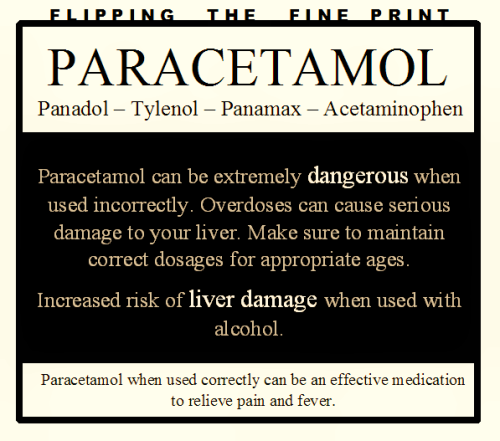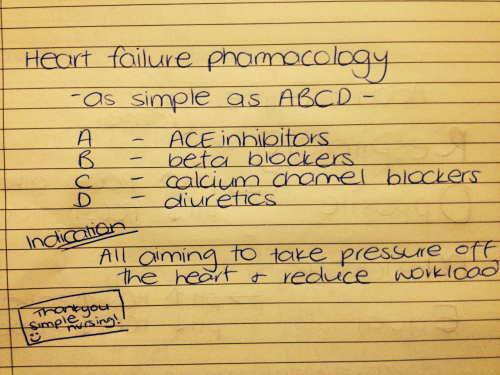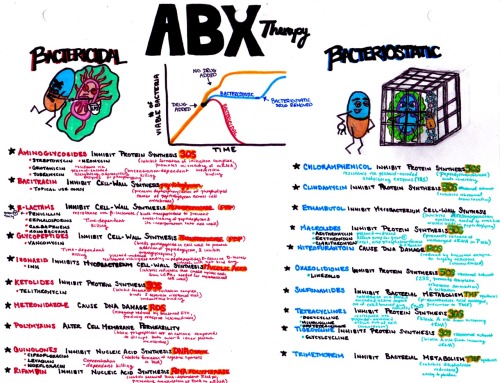#pharmacology

This post was sponsored by @tafferlicious on Patreon! Thanks so much for your sponsorship. Want to sponsor a post every month? Consider Becoming a Patron!
What Do Benzos Do, Exactly? What Are They Used For?
Benzodiazepines act as a central nervous system depressant. That has a multitude of different effects, and honestly, they’re a uniquely useful class of drug.
They can be used to treat muscle spasms, anxiety, and sleep disorders. They can keep a patient sedated both in the short term or the long term. Some of them can even stop seizures.
One of the benefits—and terrifying side effects—of benzos are their ability to keep the brain from forming memories. This makes them extremely useful for procedural sedation, for people like me who may need things like dental surgery but want to be blissfully memory-free of the process. However, this leads to another use of benzos as, well, date-rape drugs.
Want to learn more? Read on, fair human!
(trigger warning: pharmacology of date rape drugs mentioned. No images or descriptions of sexual assault occur. One bit about dentistry and consent.)
Benzos: An Abbreviated List
Because there are an awful lot of these drugs on the market, I’m going to keep it relatively short, and list only the most common benzodiazepines available. Different meds are used for different things and come in different forms, so I’ll list that too!
Oh, and as for abbreviations: PO = oral (usually a pill, but sometimes a liquid suspension for kids); IM = intramuscular (a shot in the arm, leg or buttock), IN = Intranasal (can be administered up the nose), IV = intravenous. Anxiolysis means “breaking up anxiety”, or reducing it.
diazepam (Valium): PO / IV. Used for muscle relaxation, stopping active seizures, anxiolysis, as a sleep aid (short term). Limited use for sedating violent patients because an IV must be in place. In babies, diazepam can also be given per rectum (up the butt) to stop seizures.
lorazepam (Ativan): PO / IV / IM. Long acting. Used for stopping active seizures, anxiolysis, sedation of violent patients. Falling out of favor for seizure and chemical restraint because of its long-lasting effects (up to 8 hours).
midazolam (Versed): PO / IV / IM / IN. Very powerful sedative effects. Used for stopping seizures, sedation of violent patients, and sedation in the ICU / OR. This medication is very commonly used in ICUs because of this, and is the first-line choice for stopping seizures in patients without IVs in place.
alprazolam (Xanax): PO only. Primarily used for anxioslysis. Highly addictive.
triazolam (Halcion): PO only. Primarily used for procedural sedation and anxiolysis.
clonazepam (KlonidineKlonopinthanks anon!): PO only. Primarily used for anxiolysis and as a newer, less-addictive alternative to alprazolam.
I will say this: as a provider who works in the emergency and intensive/critical care setting, if I had to only ever have one benzo on hand, I would take midazolam and never look back.
What Does It Feel Like To Be On A Benzo?
Characters under the effects of benzodiazepines may feel drowsy, dizzy, “dopey”, “loopy”, like their limbs are very heavy, like their eyelids are heavy. They may also feel giddy. Benzos suppress inhibitions, so people may be an interesting combination of silly and drowsy.
Under a strong enough dose, benzos can cause characters to fall asleep.
Memories of time while on a benzo, particularly one with strong amnestic effects like triazolam or midazolam, can be blurry. Characters may remember one or two key events during a period of sedation, or they may simply not remember it at all.
I had triazolam three times for dental procedures. The first time I didn’t remember anything, the second time I remembered stressful events (but I don’t remember feeling stressed), and the third time I remembered nothing again.
However, the first time I was apparently still extremely anxious, to the point of crying and asking for my wife. (I’m an EXTREMELY nervous dental patient. I had my trust massively violated by a dentist as a kid, by which I mean, if you ask a kid if it’s okay to keep drilling, and she says NO, you fucking stop, you piece of shit, balloon gloves don’t replace consent.)
Ahem. Sorry.
Are There Side Effects?
There can be. Benzodiazepines often cause dizziness, drowsiness, foggy thinking, weakness, an unsteady gait (stumbly walk).
It’s more rare, but they can cause disorientation, depression, sleep disturbances, and memory impairment.
When a character has a paradoxical reaction, even though they’ve been given a stimulant, they may become moreexcited, agitated, and aggressive.
Also, any benzo given in high enough doses can be enough to trigger respiratory depression or even apnea (lack of spontaneous breathing).
All of these side effects are potentiated (made stronger and more likely) when benzos are taken while the person has also been drinking alcohol.
Are Benzos Addictive?
They can be. Those who take them every day can become physically dependent on them, dependent those who stop taking them suddenly can have seizures, nausea, vomiting, body aches, anxiety, double vision, profuse sweating, and more. This can happen with a sudden discontinuation or even a dose reduction.
Severe symptoms can include seizures, delirium, psychosis, and hallucinations. Seizures can be fatal if not treated.
Why Do Benzos Stop Seizures?
GABA receptors, the same receptors that benzodiazepines hit, are CNS depressants. That means they can reduce overall activity, such as the uncontrolled activity of a seizure.
However, the longer a seizure goes on, the more GABA receptors are inactivated, which is why patients who’ve been seizing for >10 minutes may not respond to benzos, and may need another class of drug. This condition of prolonged seizure activity, by the way, is called status epilepticus.
You Mentioned Date Rape Drugs?
Yes.
This is the downside of a class of drugs like benzos, that have both sedation, inhibition lowering, and amnestic effects. Some asshole is going to use it incorrectly. Some asshole is going to abuse it.
And that is absolutely awful. The way our society, or at least American society, handles sexual assault is atrocious, much less when it comes to those involving alcohol and drugs, whether the victim willingly ingested them or not.
That kind of abuse of something designed to be therapeutic gets me really steamed.
However, benzos help millions of people worldwide each year. Without them the odds of stopping ongoing seizures would be very slim. And millions of people have anxiety that is eased with a low dose of benzodiazepine. Two of them are in my family.
And even if we got rid of all the benzos in all the world…. assholes would find a way.
Assholesalways find a way.
Was this post helpful to you? Drop a comment or share it around!
And thanks for reading :)
xoxo, Aunt Scripty
This post was sponsored by @tafferlicious! Want to sponsor? Consider becoming a sponsor on Patreon!
What’s up, keyboard trolls?! I’ve been getting some pushback from some writers about my recent post on the knocking-someone-unconscious trope, and I wanted to take a second to address it. Mostly I’ve been challenged to provide a better alternative, which is totally reasonable.
So if we can’t knock people out with head injuries, how do we neutralize enemies without killing them, Aunt Scripty?
(First of all, yes, head injuries can knock people out, it’s just that anything that’s hard enough to knock them out is enough to also kill them or cause permanent brain damage.
This is a really good question, and one I’ve thought about quite a bit. There are a couple of options that I can think of, but I want to make one thing absolutely clear:
Your characters have to be morally prepared for the fact that any of these techniques could still be lethal. If they’re going to be “neutralizing” someone, that means that they may be forced to take a life. It’s a not-so-good option, it’s not the desired outcome, but it’s a very real possibility. If they can’t stomach that thought (or you don’t want to deal with the fallout afterwards), they may need to find another way to accomplish what they want.
Option A: “Be quiet and put your hands up or I’ll shoot you in the head.”

Why is that gun chained to the….? Okay, fine. New plan. Shaw?

That’s better. (Side note: do not fuck with Shaw.)
A gun to the head can be very convincing indeed, although your characters have to be ready to pull the trigger if the person offers resistance. A gun should never be drawn if the person drawing it isn’t ready and willing to use it. This should be followed by another character, either the subdued themselves or a second protagonist, duct taping someone’s mouth and binding the hands and feet. (Don’t put anyone on their stomachs and don’t hogtie; these are risky.)
Option B: Ketamine.

You guys, ketamine is my very favorite drug. (By which I mean medication. I have actually never done a drug that was not prescribed to me, and I’m not just saying that in case my bosses find this blog.) [if they found this blog I would be in a world of shit anyway, and i would tell you if i had tried anything interesting, which i have not.]
Of all the sedatives one could theoretically use for a chemical takedown, ketamine would be my choice, primarily for its safety. Benzodiazepines would definitely work, it’s just that one of their major side effects is respiratory depression in high doses. (We routinely use 10mg of midazolam IM at work; I would caution that while this is (usually) (eventually) effective, it takes a few minutes before the struggling winds down, and patients may need airway support if this is done.)
Ketamine, on the other hand, works very well, and patients maintain their own airways pretty well, as well as managing secretions (swallowing). It’s a very popular anesthetic in adult, pediatric, and veterinary medicine (there’s a forthcoming post about sedatives vs analgesics; ketamine actually does both).
The reason I like it for this purpose is multifold. For one, it’s just a neat fucking drug. It doesn’t cause the typical unconsciousness that other anesthetics do; ketamine causes the brain to still be awake, but basically get shut off from the outside world, meaning that the person’s eyes may remain open, and they may have rapid eye movement, but they will not be aware of any outside stimulus. This is really unnerving the first time you see it. Watch this child below:
This kid is fully anesthetized and pain free, even though she looks awake.
It isn’t an instant onset, though, because nothing (except MAYBE propofol) is.
For two, there is basically no upper dose limit on ketamine. Once upon a time a child accidentally got100xthe appropriate dose and was absolutely fine; she was just…. anesthetized for 24 hours. Y’know. Just cuz.
An appropriate dose of ketamine, given in the muscle, is 5 mg/kg; basically, everyone under 220lbs would get 1x 500mg dose (5mL syringe) in the thigh, even though for a smaller person (50kg/110lbs) this is a double-dose. As the mg/kg dose rises, onset quickens; typically it’s about 2 minutes from injection to sedation, but again, quicker in smaller people.
The one thing worth noting here is that actually the max volume any one muscle can really take in is about 5mL, so you may want to have your character duel-wield syringes loaded with ketamine (5ml each) and go for one in each thigh, or double-stab the assmeats, if the person they’re taking down is particularly big.

She will fuck up your day. (source)
You could even do a “will one syringe do?” moment, where your characters have to decide whether one syringe will “do the job” or if they need two. The cutoff for a single syringe working is probably around 100kg, or 220 lbs.
One thing here is worth going back to, which is the 2-minute onset. Two minutes is a long time, even if functional resistance is lost sooner. People get angry when you inject them in the butt without their consent. Even if they’re going under sedation, they may struggle and fight and make noise. So your characters need a plan for what to do when the target doesn’t go down immediately.
It’s also worth noting that there can be complications with ketamine. Some people’s larynxes briefly freeze up (laryngospasm), some people get transient apnea, and some people transiently desaturate (blood oxygen % goes down). All of these fall under “probably fine”, but it is worth noting that your characters still may kill someone with ketamine. It’s safer than a head strike or shooting someone, but it’s not 1000% guaranteed to be survivable.
Oh, and a certain number of people, coming up from a ketamine sedation, will have godawful hallucinations, because ketamine is a hallucinogen; this is called an emergence reaction, and may be dramatically useful. Imagine being a bad guy and walking into a room: one of your minions is lying on the floor, eyes open but clearly not awake, and the other is screaming and hallucinating in the corner.
Neat.
Option C: The Sleeper Hold / Choke Hold / Kill Someone Hold (NOT SAFE, MINIMALLY EFFECTIVE)
This is a common technique in martial arts. Here we see Hulk Hogan doing this to a reporter (who is a willing participant; we’ll get to why I believe this video in a moment)
Watch how quickly this works: the hold begins with pressure at 0:39, he goes completely limp 7 seconds later (0:46).
Hogan used: Blood Choke! It was very effective!
The downside? The victim wakes up/lifts his head another 11 seconds after that (0:57). In the intervening 11 seconds, Hogan has dropped him on the ground so hard that he hit his head on the hard floor and opened up his scalp. (You can see this at 1:09, when he turns around and the back of his jacket has a good hard smattering of blood on it.)
There are two reasons I believe this video is real: one is the head strike and the blood involved; the other is that he actually sued Hogan for the injury.
There are two kinds of choke holds: blood chokes, which compress the carotid arteries, and air chokes, that compress the trachea and prevent people from breathing. As we can see above, a blood choke is rapidly effective, but also rapid offset. They’re relatively safe in young people, but anyone who may have some plaque building up in the carotid arteries they may have a stroke if the plaque gets broken off from the artery wall.
Air chokes can fracture tracheas and kill people, but they’re probably effective for a little bit longer than above, and are routinely used in martial arts as a “victory hold”, so there’s that.
Option D: A+C or B + C = Effective?
The “ultimate” trope-done-right version of getting a sentry or other bad guy under control may just be a combination: a blood choke for temporary unconsciousness, during which a nice dose of ketamine gets injected in the thigh, or a bad guy willingly takes a sedative rather than get shot in the face.
So that’s it for this post!
I hope you all liked it and found it at least remotely useful. As a personal note, I ask you not to try any of these things in real life, and I also give you my Disclaimer of Infinite Justice. Thanks for reading!
xoxo, Aunt Scripty
The Script Medic is supported by generous donations on Patreon. Have you considered donating?

Hi guys,
Here I am talking about my study method for the last exam of my second year of med school.
Pharmacology was the most demanding exam I have faced so far, but I found it interesting as well.
I needed all the study techniques I had learned so far in med school to cope with this subject, and I am satisfied with the result.
There is a lot to learn, many formulas to understand and many names to memorise, but it is one step closer to getting into the thick of medicine.
Here is how I dealt with this exam. We can summarise my study method into three parts:
1-Organisation (during lessons):
during the first part, I went to classes and took notes. I later quitted the lectures to focus on individual studying, but I needed to go to lessons at least for the first month. Indeed, I felt the need to see what the professor focused, and what was irrelevant instead.
Also, lectures were helpful to learn the basic concepts of pharmacology. I understood what pharmacokinetics, pharmacodynamics or pharmacoeconomic are about and their fundamentals.
After having gone to classes, I reorganised the material. I did not use the book that much. Indeed, pharmacology is a subject that continuously changes, so every text is old. I consulted the book only for the pharmacokinetics part when I could not understand some formula or definition.
In this phase, it was fundamental to make a scheme. I got a copybook, and I enumerated the pages.
Helping myself with the syllabus, I identified the macrotopics. I used the first sheets for creating an index.
For every argument, I made an accurate scheme using different colours. I utilised all the tools that I knew to make it the more effective possible: I used charts,lists,tables, etc.
I also left some space for the mnemonics (I will deal with this point later in this post).
2-Comprehension
I had to abandon pharmacology for a while to focus on the other exams. When I went back to pharmacology, I restarted to read all my notes.
With a pen, I underlined the most important sentences, and I circledkeywords.
I dedicated this phase of my study to put all the pieces together. I comprehended how drugs act, what the reason for their side effects is, etc.
3-Memorisation
In the last part of my study, I used all the mnemonics I know to learn the names of drugs.
Usually, this is not the most demanding phase of my study. Quite the opposite, it required me much time to memorise all the information.
I created shortstoriesandacronyms to help my memorisation. I wrote these with a pencil in the spaces I had left during the schematization.
Recalling the arguments was vital. I did it alone and with the usual study buddy.
One of the more critical matters, in my opinion, is to select the relevant data. The programme is immense, and it is impossible to know everything, so a choice is needed. Making this selection with a friend makes it more manageable.
As usual, I did not study the day before the exam. If it is correct in general, this time, it was even more vital.
As I said, the syllabus is enormous, so you can not revise everything the day before. You may select the topics you struggle the most with, but having a look at them will only increase your insecurities, which might affect your performance during the exam.
After a long period of studying, relax and mentally prepare for the exam.
And this is all! I hope someone will find this helpful or at least interesting. Good luck to all of you with your exams
Pacritinib (Vonjo, CTI BioPharma) is indicated for use in the treatment of adults with intermediate- or high-risk primary or secondary (post-polycythemia vera or post-essential thrombocythemia) myelofibrosis with a platelet count below 50 × 109/L.
Pacritinib is a novel oral kinase inhibitor with specificity for activity against Janus associated kinase 2 (JAK2) and IRAK1, without inhibiting JAK1. The recommended dosage is 200 mg orally twice daily.
FDA Approves PYRUKYND® (mitapivat) as First Disease-Modifying Therapy for Hemolytic Anemia in Adults with Pyruvate Kinase Deficiency.
Bacteria may Demonstrate any of Five General Mechanisms of Antibiotic Resistance:
1. Lack of entry; Decreased cell permeability.
2. Greater exit; Active efflux.
3. Enzymatic inactivation of the antibiotic.
4. Altered target; Modification of drug receptor site.
5. Synthesis of resistant metabolic pathway.
More than HIV, more than malaria. The death toll worldwide from bacterial antimicrobial resistance (AMR) in 2019 exceeded 1.2 million people, according to a new study.
In terms of preventable deaths, 1.27 million people could have been saved if drug-resistant infections were replaced with infections susceptible to current antibiotics. Furthermore, 4.95 million fewer people would have died if drug-resistant infections were replaced by no infections, researchers estimated.

Answer and Explanation:
Please stick to correct dosages, I’ve seen too many kids be put on a liver transplant list in the last year - this message is long overdue!
Too many of us think that panadol is harmless and can’t hurt us. It really, really can!
Apologies if there are more common names around the world - I’m in Australia!
Post link
Antibiotic mechanisms and microbial resistance…examples of darwin’s evolution at its finest and most terrifying
download all of my medical school study guides here!
Post link
Pharmacology Course Cancelled After Study Suggests It Influences Med Students’ Future Prescribing Behavior
https://gomerblog.com/wp-content/uploads/2018/10/36419409_s.jpg
WASHINGTON, DC—Citing new research from the Pharmaceutical Research & Manufacturers of America (PhRMA) that indicates physicians prescribe drugs they learned about in medical school at a far higher rate than those they did not, Washington Medical School has announced its popular Pharmacology course will be immediately and permanently removed from its curriculum. “The data is […]
Read more on https://gomerblog.com/2020/09/pharmacology-course-cancelled/?utm_source=TR&utm_campaign=DIRECT
www.gomerblog.com
Post link
FDA approves first topical opioid for postoperative pain cats
This is really great news! Cats have very few options for pain relief and this one will be a game changer. Four days of analgesia that doesn’t involve pills or the owner doing anything at all.
Meowmeow is a very well behaved cat, most cats aren’t this easy but the information is helpful. If you can’t pill your pet tell your veterinarian! We can often get medicine made into easier to give forms like liquids, gel, transdermal, or tiny pills that melt in the tongue. Not all medication can be made into different forms but we can always find out. Also keep in mind that getting meds compounded does increase the cost a bit but often it’s worth it.
Vascular disease can develop when blood vessel linings break down and leak. There are no effective treatments because little is known about how vessel linings can resist injury. Now University of California San Diego School of Medicine researchers have uncovered a new pathway involving interplay of PAR1 and S1PR1, two G protein-coupled receptors — signal transducers embedded in cell membranes. These receptors promote beta-arrestin-2 signals, which in turn protect against cell death in blood vessel linings.
The study, published December 7, 2021 in Proceedings of the National Academy of Sciences, was led by JoAnn Trejo, PhD, professor of pharmacology and assistant vice chancellor of the Office of Health Sciences Faculty Affairs at UC San Diego School of Medicine.

Above: Under a microscope, researchers can see that the two GPCRs (PAR1 in red and S1PR1 in green) reside at the same location on the surface of endothelial cells, which form blood vessel linings.

Coffee, please ☕️

Morning sunshine

Tea Time ☕️

Pharmacology ☕️


Really nice morning.

What a nice evening ☕️

☕️ cute afternoon, isn’t it ?

☕️


Happy New Year

Pharmacology ☕️

Pharmacology ☕️
Thalidomide was originally introduced as a non-barbiturate sedative in 1957 and later marketed for the treatment of nausea in pregnant women by the German company Chemie Grünenthal, as antiemetic properties were discovered. In the 1960s however it became apparent that thalidomide treatment resulted in severe teratogenic birth defects and from November 1961 it began to be withdrawn worldwide. It has since been reintroduced into a number of studies and treatments due to its immunosuppresive and anti-angiogenic activity.

Chemical structure of thalidomide. Thalidomide is a stereo-isomer and can exist, depending on the state of the chiral carbon, in two enantiomeric states. Both R and S can interconvert in body fluids and tissues. Thalidomide was distributed as a racemic mix of both enantiomers.
- Thalidomide is a piperidinyl isoindole and synthetic derivative of glutamic acid, consisting of two linked glutarimide and pthalimide rings.
- The unstable chiral carbon allows two enantiomers to coexist - the S-enantiomer being teratogenic (Franks, 2004.)
- The mechanism of action that resulted in these teratogenic effects is still not fully understood.
- Leading theories focus on thalidomide’s antiangiogenic properties; ability to induce cell death and generate reactive oxygen species; and Cereblon, a thalidomide-binding protein and primary source of teratogenic action (Takumi, 2010).
- Thalidomide is hydrolyzed in bodily fluids and metabolized in the liver by cytochrome p450.
When first developed thalidomide was deemed so non-toxic that an LD50 could not be established, but tragically an estimated 25,000 babies were born severely impaired and a further 123,000 miscarried or stillborn (Johnson, 2016).

Antiangiogenic properties
Thalidomide has the ability to inhibit angiogenic vascularization in embryos, thus carrying out teratogenic damage.
- The bulk of its damage occurs in days 20-36 of fertilization.
- During this time, the primitive vessels formed by vasculoneogensis mature and begin to proliferate and migrate in response to signals and growth factors such as FGF.
- It is thought that analogues of thalidomide could block a number of these signals, thus preventing embryonic vascular development outwards towards the limbs and resulting in limb deformities such as phocemelia.
Molecular targets of thalidomide
Cereblon
- Forms part of a ubiquitination complex with DNA Binding Protein 1, which in turn selects molecules for destruction.
- Thalidomide binds, preventing formation of the complex and proper regulation of developmental signaling molecules, thus initiating teratogenis by inhibiting angiogenesis (Takumi, 2010).
- Could also degrade some proteins and prevent breakdown of others.
Tubulin
- part of the cytoskeleton and required for cell proliferation and formation of new vessels in the embryo.
- When bound by the 5HPP-33 thalidomide analogue, cytoskeletal dynamics are altered preventing cell division.
- This could prevent cell proliferation and migration and consequently tissue morphogenesis, the severity of which would be dependent on vascular and tissue maturation at the point of contact with thalidomide (Vergesson, 2015).
Amphetamines are sympathomimetic amines which mimic the structures of the catecholamine neurotransmitters, noradrenaline and dopamine.
- They are substrates for the neuronal plasma membrane monamine uptake transporters DAT and NET (dopamine and norepinephrine transporters)
- Thus act as competitive inhibitors, reducing the reuptake of dopamine and noradrenaline.
- In addition, they enter nerve terminals via the uptake processes or by diffusion and interact with the vesicular monoamine pump VMAT-2 to inhibit the uptake into synaptic vesicles of cytoplasmic dopamine and noradrenaline.
- The amphetamines are taken up into the storage vesicles by VMAT-2 and displace the endogenous monamines from the vesicles into the cytoplasm.
- At high concentrations amphetamines can inhibit monoamine oxidase, which otherwise would break down cytoplasmic monamines.

The cytoplasmic monoamines can then be transported out of the nerve endings via DAT and NET transporters working in reverse, a process thought to be facilitated by amphetamine binding to the transporters. The concentration of extracellular dopamine and noradrenaline is thereforeincreased, and the reward response generated by increased activation of dopamine receptors can eventually lead to addiction.
The biggest problem facing addiction is the lack of effective medical treatment available. Currently, therapeutic strategies involve giving the patient something similar, but less potent than the drug of addiction, in an attempt to slowly reach abstinence with minimal withdrawal. However, due to memory and learning mechanisms as well as epigenetic and transcriptional changes, relapse is not uncommon.
Pharmacology is less scary than it looks but hard to understand just through reading - here’s a great video
The human reward system is made up of neural structures responsible for incentive salience (desire), associative learning (primarily positive reinforcement and classical conditioning), and positive/pleasure emotions (e.g. euphoria).
- Dopamine is the primary neurotransmitter of the brain’s reward mechanisms
- Most important reward pathway is the mesolimbic dopamine pathway.
- Thisconnects the ventral tegmental area (VTA) of the midbrain, to the nucleus accumbens (NAc) and olfactory tubercle, which are located in the ventral striatum
- Theprojections from the VTA are a network of dopaminergic neurons with co-localized postsynaptic glutamate receptors.
- The NA itself consists mainly of GABAergic medium spiny neurons.
When a rewarding stimulus, such as eating food, or direct stimulation by a drug occurs, dopaminergic neurons in the VTA are activated. These neurons project to the NAc, and their activation causes dopamine levels in the NAc to rise,activating dopamine receptors and generating a reward response, thus encouraging repetition and learning. –> any activity that resulted in a reward from your brain will therefore be one you want to repeat. This is essentially how your brain keeps you alive and reproducing.

Another major dopamine pathway, the mesocortical pathway, also originates in the VTA but travels to the prefrontal cortex, and is thought to integrate information which determines whether a behavior will be elicited.Thebasolateral amygdala projects into the NAc and is thought to also be important for motivation, while the hippocampus plays a role in learning and memory.
Even though increased dopamine in the brain reward system is generally thought to be the final common pathway for the reinforcing properties of drugs, other neurotransmitters such as serotoninare involved in the modulation of both drug self-administration and dopamine levels. Serotonin may be important in modulating motivational factors, or the amount of work and individual is willing to perform to obtain a drug. Serotonergic neurons project both to the NA and VTA and appear to regulate dopamine release at the NA.
- Excessive intake of addictive drugs –> repeated release of high amounts of dopamine –>increased dopamine receptor activation.
- The intrinsic purpose of an endogenous reward center is to reinforce behaviors that promote survival, so when a drug stimulates this center, drug-seeking behavior is also promoted - induced by glutamatergic projections from the prefrontal cortex to the nucleus accumbens
- Prolonged and abnormally high levels of dopamine in the synaptic cleft can induce receptor downregulation, resulting in a decrease in the sensitivity to natural stimuli.
- Alongside the positive reinforcement, these withdrawal symptoms can be considered negative reinforcing factors.
- Discontinued drug use will often induce various negative responses such as chronic irritability, physical pain, emotional pain, malaise, dysphoria, alexithymia, and loss of motivation for natural rewards.
Chronic addictive drug use causes alterations in gene expression in the mesocorticolimbic projection, which arise through transcriptional and epigenetic mechanisms. The most important transcription factors that produce these alterations are ΔFosB, cyclic adenosine monophosphate (cAMP), (CREB), (NF-κB). Overexpression of ΔFosB in the D1-type medium spiny neurons in the nucleus accumbens is necessary and sufficient for many of the neural adaptations and behavioral effects (e.g., expression-dependent increases in drug self-administration and reward sensitization) seen in drug addiction. This means an individuals actual genes are changed by chronic drug use to make them even more addicted - not just a case of being able to stop when they chose.
Normal metabolism
- Drug metabolizing enzymes are are located in lipophilic membranes of endoplasmic reticulum (Cytochrome P450 (2E1, 1A2 and 3A4))
- 95% of paracetamol is conjugated with glucaronic acid or sulphate and excreted in urine. This is non-toxic.
- 5% is oxidized by the CYPs to form N-acetyl-P-benzoquinone imine (NAPQI), which is toxic.
- NAPQI is conjugated with glutathione and mercapturic acid and cysteine conjugates and excreted in bile in normal metabolism.

In overdose
- the glucaronic acid and sulphate pathways become saturated, so more goes via the NAPQI pathway.
- Glutathione stores become depleted as it is consumed by the NAPQI.
- NAPQI accumulates and begins conjugating hepatic proteins and nucleic acids, including those of the mitochondria.
- Enzymes such as glutathione peroxidase, HMG-CoA, become inhibitedandradicals begin forming as the mitochondria are damaged.
- In the cytosol, MAP kinase JNK is activated, which binds to Sab proteins on the outer mitochondrial membrane, which in turn deactivates p-Src on the inner mitochondrial membrane.
- This inhibits electron transport.
- Moreradicalsare released and there is more oxidative stress.
- There is mitochondrial and cell death leading to necrosis if not treated early enough.
Liver function tests:
- GGT elevated
- Bilirubin elevated
- ALP elevated
- AST and ALT extremely high
- Becoming higher than 100 times the upper reference limit in toxic ingestion. No other hepatic conditions increase AST/ALT to these levels.
- Decreased albumin once necrosis forms – many other conditions of the liver don’t reach this stage
Ironwood tree - Memecylon umbellatum
Also referred to as Delek Air tree, Memecylon umbellatum (Myrtales - Melastomataceae), is a large shrub or small tree, up to 8-14m tall, that produces showy clusters of amazing bright purple flowers, about 1 cm each.
This tree, which can be found in Peninsular India and Sri Lanka, is not only beautiful, but also useful since it has several traditional and pharmacological uses. It provides hard timber used for building houses and boats, and a yellow dye can be extracted from the leaves and the bark that is used to treat bruises and various ailments.
Photo credit: Photo credit: ©Nuwan Chathuranga | Locality: Sri Lanka (2014)
Post link










